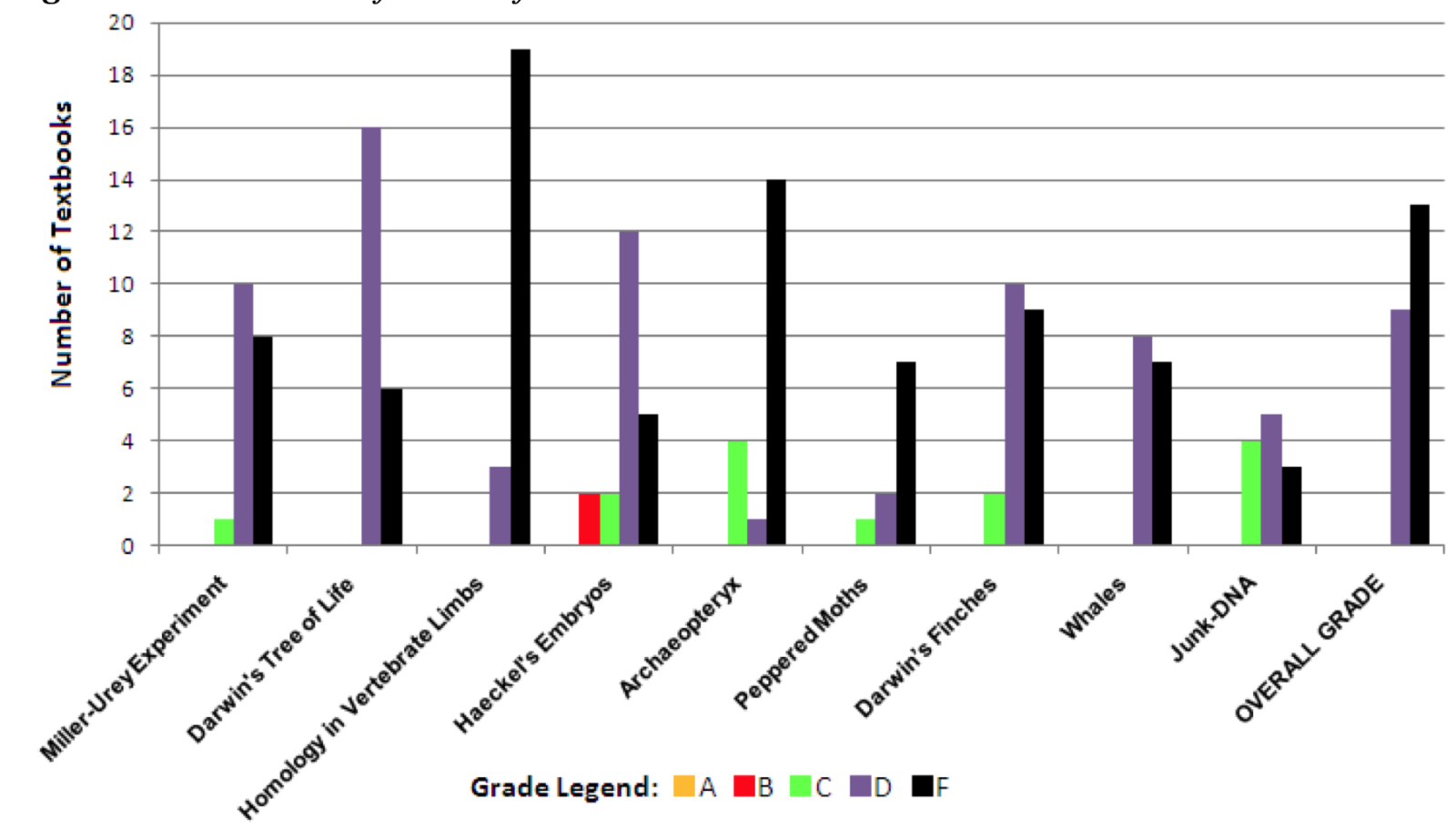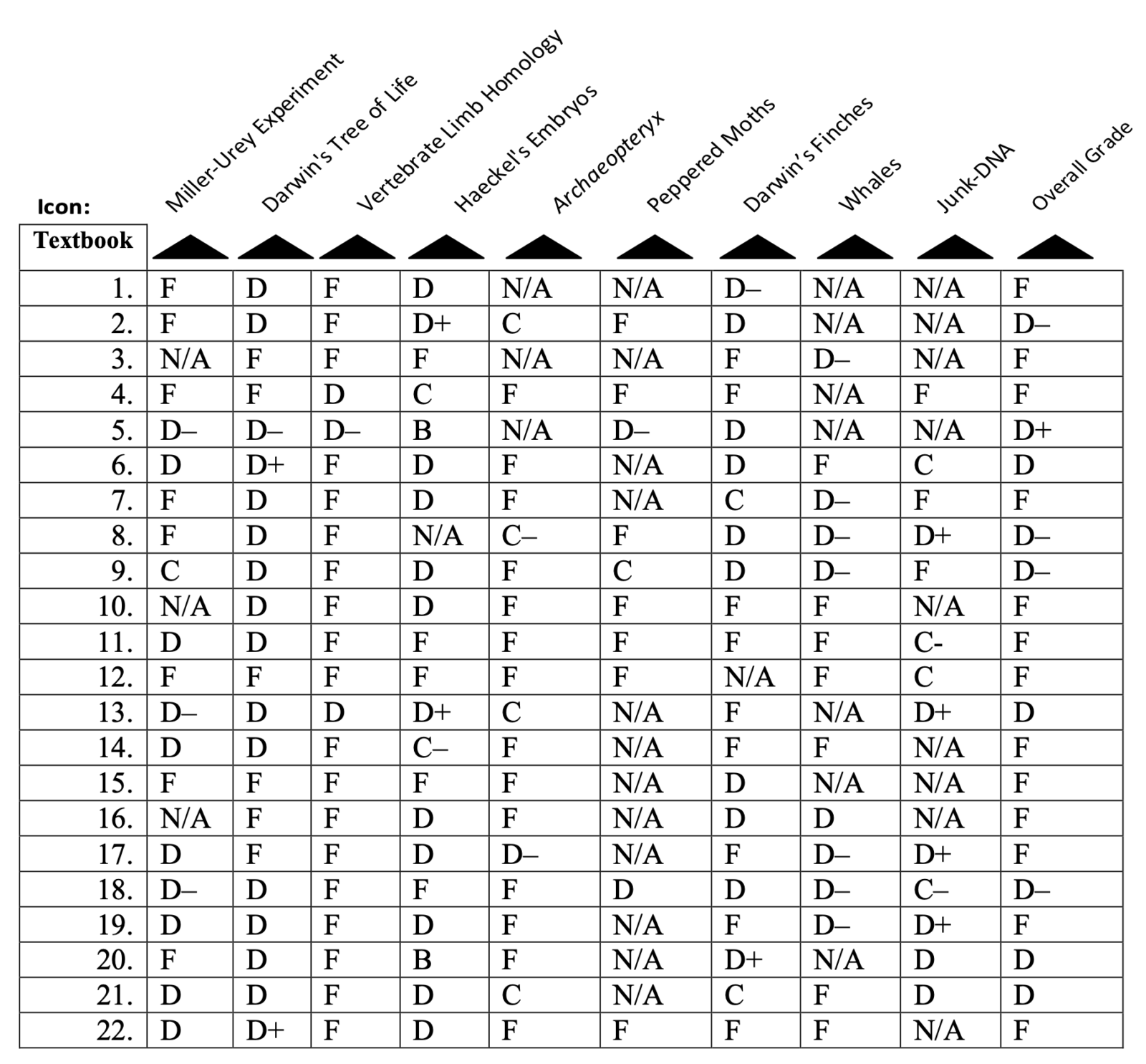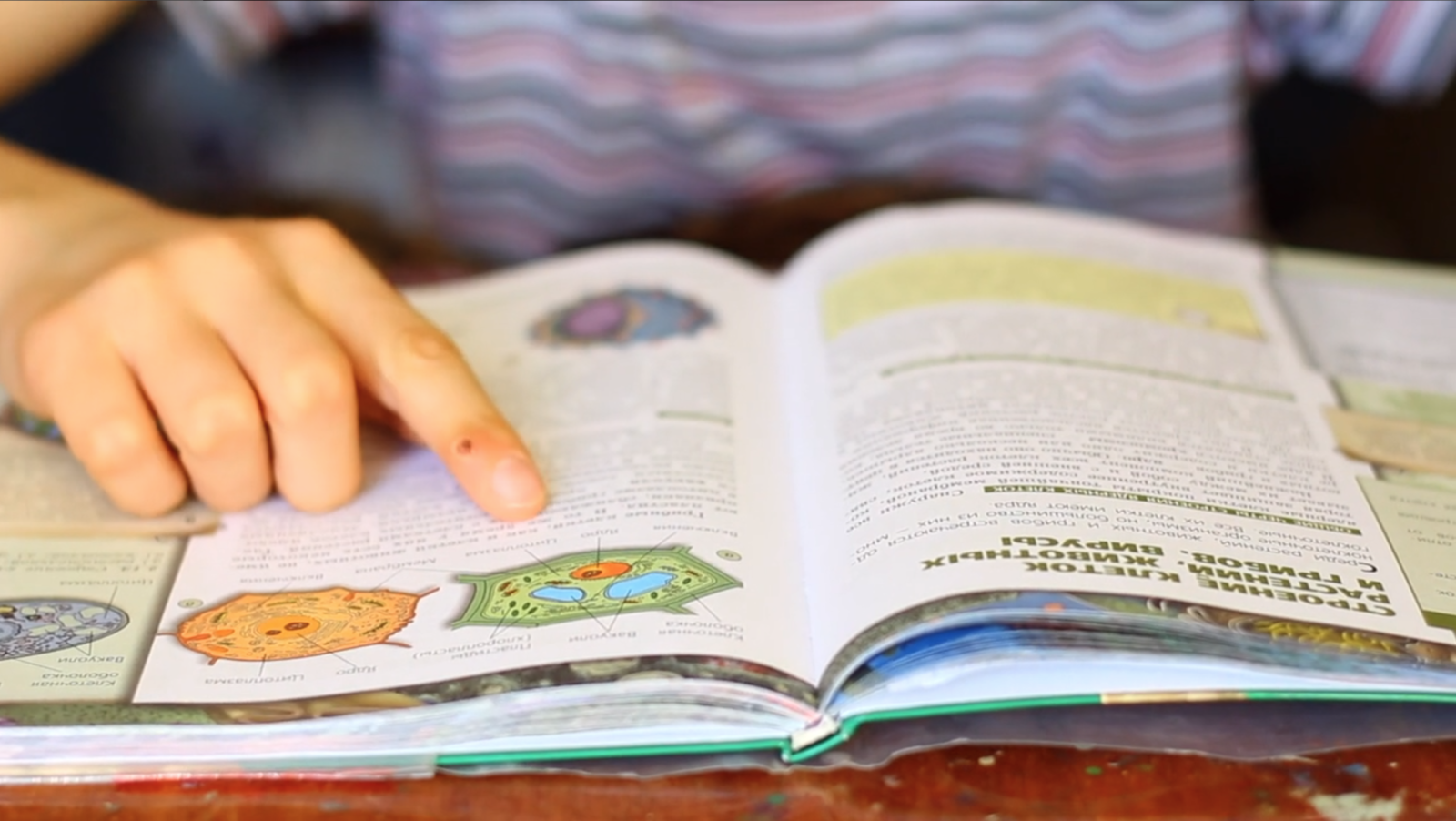(Not) Making the Grade: An Evaluation of 22 Recent Biology Textbooks and Their Use of Selected Icons of Evolution
Summary
In his 2000 book Icons of Evolution, Jonathan Wells reviewed ten then-current biology textbooks for their treatment of what Dr. Wells calls the “icons” of evolution, well-known lines of evidence commonly used to support evolution. (Wells’s 2000 textbook review can be found online, here.) Now, in 2011, we present an updated 2011 textbook review that applies Wells’s evaluation criteria to 22 recent biology textbooks, all published since 2005. The full report can be read here.
This 2011 textbook evaluation also adds two new icons that have grown in popularity over the past decade. A series of fossils purportedly showing the evolution of whales from land mammals is now presented uncritically in many biology textbooks as an alleged “poster child” for macroevolution. Another new icon is “junk” DNA, with some textbooks claiming that noncoding DNA is functionless junk.
This review thus evaluates nine icons in 22 total textbooks. A summary of the overall grade distribution for each icon is in Figure 1 below.

The overall average textbook grade of this 2011 review is an F (0.4 on a 4-point GPA scale), compared to a 0.27 average GPA (also an F) in the 2000 review.
While this suggests an extremely slight improvement in the average overall textbook grade between the 2000 and 2011 textbook reviews, current biology textbooks remain grossly inaccurate and biased when presenting the evidence regarding neo-Darwinian evolution. The quality of textbook treatment of the icons of evolution is far below an acceptable level. The next figure compares the overall average textbook grades of the 2011 review with the overall average grade of the 2000 textbook review.

The overall finding of this review is that textbook treatment of the icons of evolution has not meaningfully improved since Jonathan Wells’s 2000 review. No textbook in this review received an overall grade higher than D+. No icon received an average grade higher than a D. The average overall textbook grade in this review is an F. Current biology textbooks continue to promote evolution in an inaccurate, biased, exclusively pro-Darwin fashion.
Comparison to Jonathan Wells’s 2000 Textbook Evaluation
When Jonathan Wells published Icons of Evolution in 2000, I was a graduate student at the University of California at San Diego, conducting research and taking courses at Scripps Institution for Oceanography. In the fall of 2000, Eugenie Scott guest lectured at a Scripps graduate seminar that covered the debate over evolution. “I want you all to see this book,” Dr. Scott told our class as she held up a copy of Icons. This book will be a “royal pain in the fanny” for pro-Darwin educators, she warned.
Dr. Scott’s words were prescient. In an appendix to Icons, Dr. Wells had evaluated textbook coverage of seven icons: the Miller-Urey experiment, the tree of life, homology in vertebrate limbs, Haeckel’s embryos, Archaeopteryx, peppered moths, and Darwin’s finches. His results were striking. In seeking to promote neo-Darwinian evolution to students, mainstream biology textbooks universally omitted important information and/or printed outright inaccurate claims.
Wells’s textbook critique has now become a standard fixture in the ongoing national debate over evolution education. However, it’s important to evaluate the extent to which his critique has influenced the textbooks themselves, for this bears upon the question of whether textbooks are presenting evolution accurately in 2011.
As noted already, textbooks assessed in this review show little overall improvement since Wells’s review in 2000. The one icon that showed nontrivial improvement was Haeckel’s embryos. This is largely because many textbooks no longer use drawings of embryos, and instead use photographs. The improvement most likely stems from increased public awareness — resulting from Dr. Wells’s 2000 review and subsequent publicity — about inaccuracies in embryo drawings. Yet the average grade for textbook treatment of Haeckel’s embryos remains a D, since most textbooks still overstate vertebrate embryo similarities. In fact, there are still textbooks in use, including one published in 2010 textbook and another in 2011, that include embryo diagrams directly adapted from Haeckel’s inaccurate drawings.
Another icon showing very slight, arguably trivial, improvement is Darwin’s tree of life. Despite increasing problems faced by scientists seeking to reconstruct a tree of life, all the textbooks in this review treated common descent — the notion that all living organisms are related — simply as an unquestioned fact. However, textbooks in the 2011 review were more likely to mention the Cambrian explosion (72%) than in the 2000 review (20%). But even when the Cambrian explosion was mentioned, it was never framed as actually posing a challenge to neo-Darwinian evolution.
Not all icons showed improvement. For example, this review gave a significantly higher percentage of F grades for homology in vertebrate limbs. Of 22 textbooks reviewed here, 19 received an F for this icon, compared to only 3 out of 10 in the 2000 review.
Another change is that more textbooks in the 2011 review omit the peppered moth icon, probably another effect of criticisms raised by Wells. While some icons, such as Darwin’s finches, homology in vertebrate limbs, or the “tree of life” remain in all the textbooks evaluated, the peppered moth appeared in only 10 of the 22 textbooks. This is a marked change from Wells’s 2000 review where 80% of the textbooks used the peppered moth.
The average grade for each icon was a D or below, as seen in Figure 3, which compares the average grades (on a 4-point GPA scale) for each of the seven icons analyzed in both Wells’s 2000 review and this 2011 review.

As for the new icons, whale evolution is becoming increasingly popular with textbook authors. It appears in 15 out of 22 of the surveyed textbooks. So-called “Junk DNA” appears in nearly as many textbooks (13 out of 22). Textbook treatment of junk DNA was better than expected, and it was rarely used as an argument for evolution. However, many textbooks fail to explicitly recognize the extensive evidence of function for non-coding DNA.
Most significantly, however, all the textbooks in this 2011 review promote neo-Darwinian evolution in a highly biased, exclusively pro-Darwin fashion. Some textbooks acknowledged that critics of evolution have advanced arguments again Darwinian theory. Yet this is done only as a prelude to dismissing those arguments without serious discussion. As discussed in the full report, a number of textbooks use faux-critical thinking exercises, where students are asked questions but only allowed to answer them in a manner that affirms evolution.
Unfortunately, as this review has made clear, biology textbooks have a long way to go. Parents, students and educators who seek accuracy and objectivity in evolution-education will have to continue to be a “royal pain in the fanny” of textbook publishers.
II. Textbook Grades

The full report, “An Evaluation of 22 Recent Biology Textbooks and Their Use of Selected Icons of Evolution,” can be found here.
